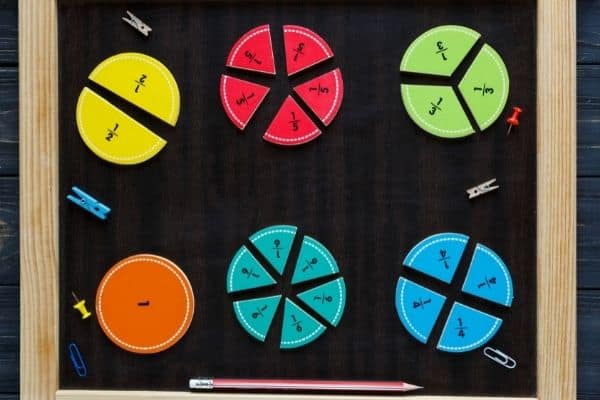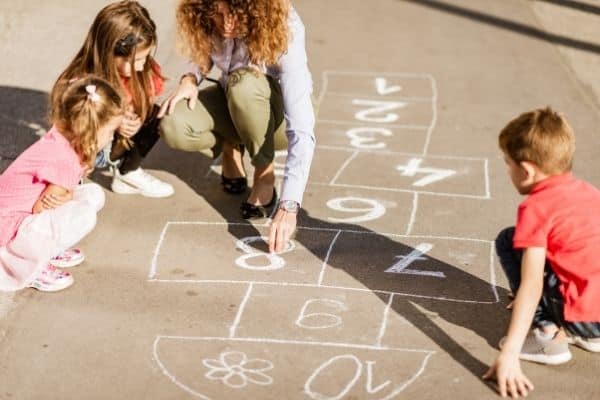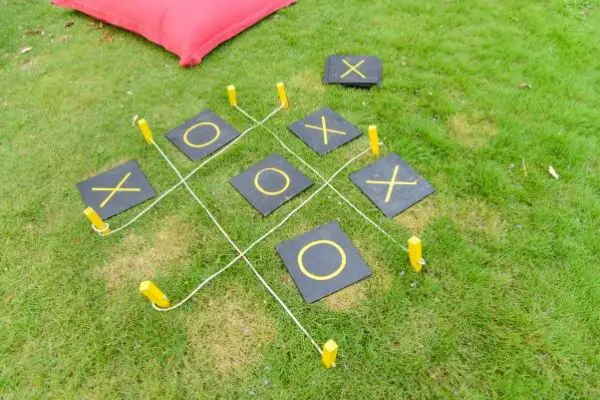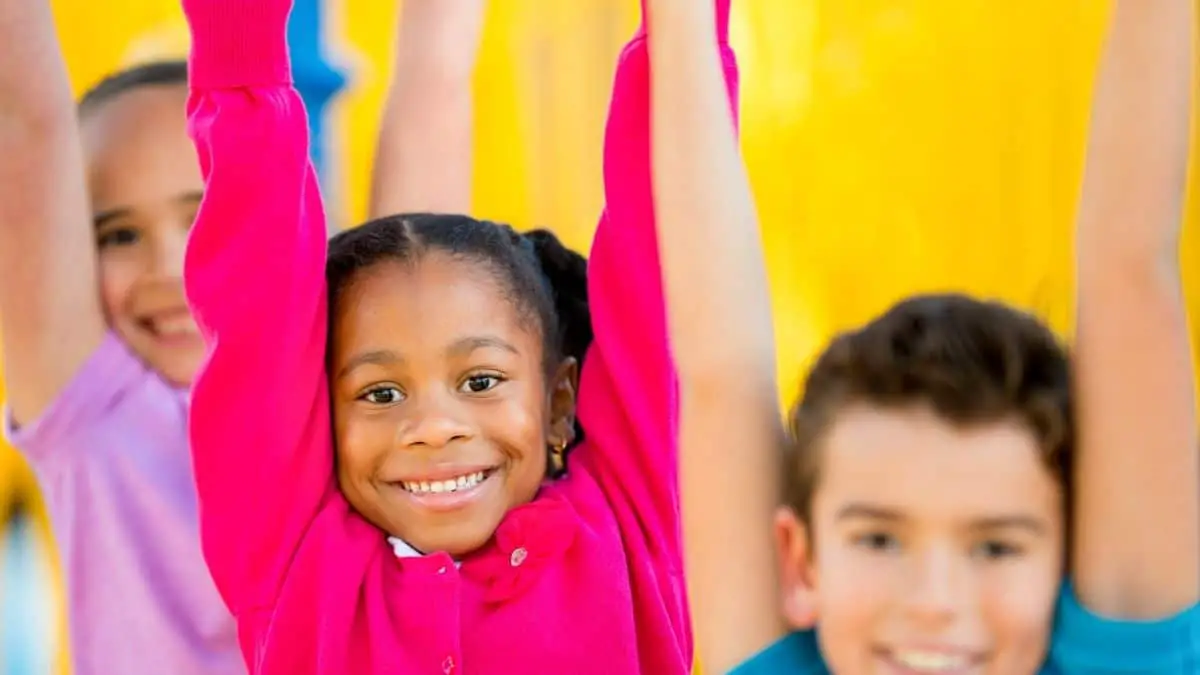Summer Math Activities – 10 Engaging & Cheap Projects (That Don’t Scream ‘School’)
Summertime ahoy!
Summer planning is about to be real for most parents. The hectic periods spent scouring the internet for fun summer activities to fill up each day are here.
With the kids staying in the house all day everyday, I can already feel your headache coming.
If you are one known to mix up a little of indoor and outdoor activities like me, check out these fun summer math activities for your elementary schoolers.
Introducing fun and engaging math activities to kids at an early age (typically before 4th grade) helps build a positive attitude towards math and boost performance. Even if it happens during the summer break!
Related post: Summer STEM Activities (10 Ideas to Keep them Entertained!)
#1. Math Jigsaw Puzzles

Solving puzzles has been known to be a good way to work on visual-spatial reasoning, which can be very helpful when solving complex math problems. It also comes a long way in helping with short-term memory, even for you as an adult, as an added bonus.
There are many ways in which math can be incorporated in a jigsaw puzzle.
From simpler activities like putting all the numbers to help younger kids count to using prime numbers to aid in building a strong foundation for future math concepts.
Activity
You can be as creative with your design as you wish or you could keep it simple depending on the level of education your kid is currently at.
For younger kids, I would recommend starting with numbers not exceeding 100 to gauge their counting skills.
To shake up things a bit, you can include patterns of shapes to check their shape and pattern comprehension.
As you go up the ladder, you can always include more complex concepts like identifying prime numbers. You can make it fun by telling them to spot each with a marker pen and awarding gifts upon completion for certain stages.
You can also ask them to only mark multiples of given numbers to improve their mastery of the multiplication table.
As we know, playing board games is a great way to bond with your kids. Why not blend in some math help?
#2. Lego Statistics
This can be an awesome activity to introduce some statistics concepts to your budding genius. Being an outdoor activity, you don’t have to worry about their concentration span.
All you need to do is take them out and have fun.
Giving awards always gives morale boost and tends to foster motivation by recognizing achievements. This activity is a case in point.
Don’t be sparing when it comes to giving rewards even for small achievements.
What you’ll need
This is a frugal activity if I ever saw one! You’ll only need three types of items. (Just make sure not to eat the first group – at least not before you’re done playing.)
- Fruits – apples, oranges and blueberries.
- Lego blocks of different colors – red, yellow and blue.
- An open area in your backyard or just the park.
Activity
- Take the fruits, in different numbers, and place them on one side of the field in different locations.
- Put the lego blocks on the table and mix them up on the other end of the field.
- You can make a score board for different participants.
- Label a place on the table for each fruit.
Instructions
- The red lego blocks represent the apples, the yellow ones represent the oranges while the blue ones represent the blueberries.
- Each turn, tell your participants to count the fruits on the other end of the field, memorize the data, then build blocks representing each fruit.
You should change the number after every turn to make it fun.
By the way, if your kid is a lego fan (and who isn’t?), make sure to check out these fun STEM activities with legos!
#3. Fraction Plates – What Is a Fraction?

To help build on concepts taught in the previous grade, summer math activities for 4th grade like this will boost your kids’ knowledge on confusing topics like fractions.
When kids are dealing with numbers, it can be confusing for them to be introduced to new types of numbers without giving them a visual representation.
Take a look at this fun activity to help teach your junior mathematician concepts around fractions.
What you’ll need
- A pair of scissors.
- 10 cardboard plates.
- A marker pen.
Activity
Caution: You should handle the pair of scissors to avoid any injuries to your kids.
Cut different fractions from the plates leaving one whole. You can include halves, quarters, eighths, etc.
Take home
You can use this activity to solve addition and subtraction problems with your kids to demonstrate to them how they come to be.
For subtractions, you can fill the whole plate with all the fractions involved in your problem then eliminating the missing piece and shedding the missing region with a marker pen.
#4. Math Rings
To teach some complex multiplication and division concepts, consider this engaging activity with an awesome display of values.
This activity employs the use of different math operators in an interesting way to train your kid on the four basic arithmetic operations– addition, subtraction, multiplication and division.
What you’ll need
- Cylindrical foam padding – can be bought cheaply from Amazon.
- A marker pen.
- Wooden or plastic board.
- Paper cutter.
Activity
- Cut the cylindrical foam padding into 10 equal pieces (about 3 inches each).
- Label numbers 0 – 9 around eight of the pieces.
- On one piece, label the four arithmetic operators.
- On the last piece, label the equal sign.
- Insert them in this order– two number-rings, operators ring, two number-rings, equal sign ring then four number-rings.
You can then write down the math problems on a piece of paper then display them one by one asking the kid to solve them. After solving, they can then show their results using the answer rings for you to verify.
#5. ‘Mathscotch’ – Hopscotch Activity for Math

This isn’t a “back in my day” kind of activity, mind you. Rather, it’s an evergreen thing that can be adapted at any moment, with any kid and (almost) any age!
Plus it’s an awesome opportunity for you to 1) work those leg muscles and ankles, and 2) connect and bond with your kids especially with outdoor activities.
Whether you are out camping, on the beach on a warm day or at home, this outdoor activity is a great way to spend time with your kids while still teaching them some math.
It’s a good thing hopscotch is an already known and simple but fun game.
What you’ll need
It doesn’t get simpler than this. You only need some space to work with and a piece of chalk. In case you are on the beach, you just need your index finger or a stick.
Activity
Depending on the level of education your kid is at, you can choose the level of complexity of grids you’ll draw on the pavement or sand that matches their skills.
Here are some great ideas you can implement with ‘mathscotch’:
- If you have young kids, you can reinforce the concept of even and odd numbers. Here, you can make them step on grids with odd numbers with one leg while stepping on grids with even numbers with two legs.
- For much older kids, you can add in some linear algebra to scale up the difficulty a bit. To make much more sense of the game, use a pebble to start on the number on the leftmost side of the algebraic equation.
- Demo: If it’s 3x + 2y = 21, then the pebble is thrown on 3 as the solution for x. To solve for y, they will have to figure out from the equation giving an answer then making the number of steps corresponding to the answer.
- You can also use it to teach prime numbers and how they are worked out.
#6. Color Coded Abacus – Introduction to Place Values
Is your kid struggling with manipulating large numbers?
Try this interesting yet quick, build-and-learn math activity to help teach your kid how to do large number problem manipulation this summer.
Fun fact: Did you know the abacus is speculated to have been invented somewhere around the 5th century B.C and was first used by Babylonians?
What you’ll need
We are going to be making the simpler version to make learning easy for kids in this activity.
- Cardboard or shoebox.
- Paper cutter.
- 6 wooden skewers.
- Glue.
- 10 sets of beads of different colors.
- Marker pens.
Activity
- Cut out two pieces of about 10 by 8 inches of the cardboard or box.
- To shape the frame, cut out inner pieces of about 8 by 6 inches from both pieces.
- Slide beads of the same colors through the wooden skewers to make the counter beads.
- Arrange the skewers to form the counter beams and attach them to the lower frame using the glue.
- While using a generous amount of glue to the top piece of the frame, put the entire frame together.
How to use
You can use it to teach younger kids how to count while they are sliding the beads to one side of the skewers.
For more mature kids, try teaching some addition or subtraction using place value concepts from the guiding video below.
#7. Snakes and Ladders – Counting Activity
Looking for a fun way to train your preschool child how to count?
Enough with the number charts already. School has them tired with chart reading.
Enjoy this snakes and ladders counting game this summer on your camping expeditions or at home.
What you’ll need
- Big piece of manilla paper.
- A marker pen.
- A ruler.
- Dice.
- Pieces for playing – you can use pawns from a chess board.
Activity
The choice of graphics to include is entirely dependent on how you want to board to appear. You can try being as creative as you wish.
- Draw a large square with 100 inner grids using the ruler to make the board.
- Number the grids from 0 (start) to 100 (Home).
- Include random length snakes on the board starting from random numbers and ending at other random numbers.
- Draw ladders on the board with random lengths too traversing through random grids.
How to play
It is quite simple to play as all you have to do is toss the dice and move your piece from start aiming to reach home. The snakes drag you down while the ladders boost your score.
Simple, right?
You can make things a little bit difficult by making the numbers even or odd.
#8. Math Tic Tac Toe

Tic tac toe is a pretty common game among kids.
It helps improve your child’s hand-eye coordination and through collaborative play, instills some form of positive social behavior.
But what if I told you there is another way you can play it that teaches math?
Read on to find out more about this math summer activity you should definitely try out.
Requirements
- Manilla paper.
- A marker pen.
- Ruler.
- A pair of scissors.
Activity
Just draw a tic tac toe grid network using the marker pen and the ruler on the manilla paper. For the playing cards, cut out equal sizes of cards from the remaining manilla paper with the pair of scissors.
How to play
The game is played pretty much the same as the conventional tic tac toe with the exception that we are using numbers.
To win the game, one has to place numbers adding up to 15 either on one row or one column or diagonally.
Quick tip: The first player cannot play a five on the center grid. Why?
You can try and figure out with your kids as a fun way to solve the mystery.
#9. Spin and Solve
Spinning objects have been known to calm in overstimulating environments. Above all, they can be used to draw attention as kids adore spinning objects.
This activity integrates a fidget spinner to help make solving math problems fun.
What you’ll need
- A fidget spinner.
- Manilla paper.
- Glue.
- A marker pen.
What to do
- Cut a small circular piece of the manilla paper with equal diameter as the fidget spinner.
- Stick the cut out to the fidget spinner using the glue but make sure it still spins freely.
- With the marker pen, draw a large arrow on top piece you just glued to the fidget spinner.
- Cut out a larger circular piece out of the remaining manilla paper and split it into small fractions using the marker pen.
- Write out math expressions on the split regions and place the spinner at the center.
The goal here is to spin the spinner and where it points at when it stops, your kids can take turns solving the math problems.
#10. Count the Shapes
This is a bonus outdoor activity you can try with your kids on a pavement or on paper. The concept behind this activity is to plaster pattern recognition some more.
You can draw overlapping shapes like triangles or rectangles, then ask them to count the number of shapes that they can see.
Frequently Asked Questions
What are some fun math activities?
Some fun math activities you can try out with your kids include fraction plates, spins and solve, math hopscotch and math rings. All of these are very adaptable to different ages. Not least importantly, they are also very cheap!
How do you make math fun in the summer?
You can make math fun in the summer by incorporating fun math indoor and outdoor activities. In other words, present it as a game and not a chore! That way, your kid will not see it as another cumbersome duty that keeps them from having fun.
How do 10 year olds make math fun?
10 year olds can make math fun by trying out fun math activities for middle school like the mathscotch activity for learning linear algebra. Or they can play math tic tac toe, which is another game that’s excellent for both indoors and outdoors.







